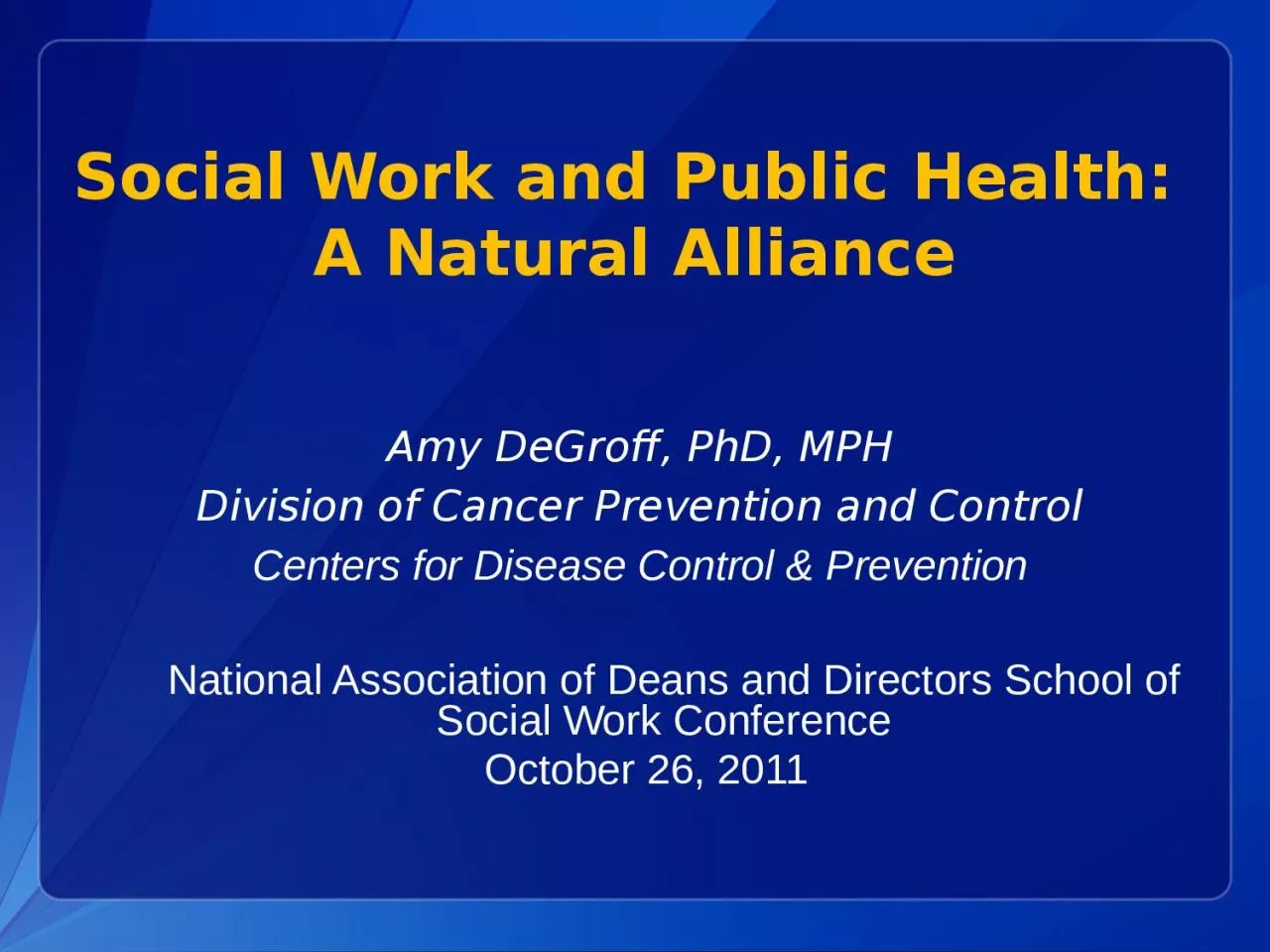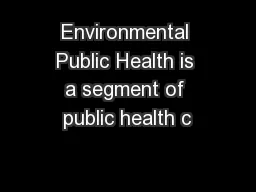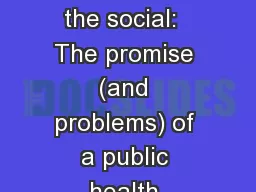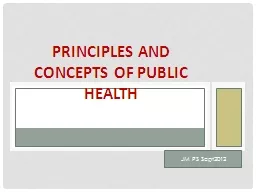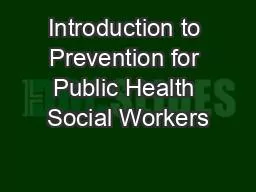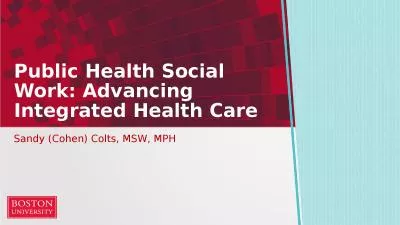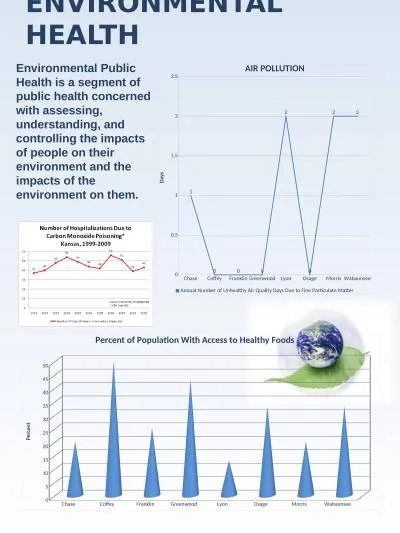PPT-Social Work and Public Health:
Author : ashley | Published Date : 2023-11-18
A Natural Alliance Amy DeGroff PhD MPH Division of Cancer Prevention and Control Centers for Disease Control amp Prevention National Association of Deans and Directors
Presentation Embed Code
Download Presentation
Download Presentation The PPT/PDF document "Social Work and Public Health:" is the property of its rightful owner. Permission is granted to download and print the materials on this website for personal, non-commercial use only, and to display it on your personal computer provided you do not modify the materials and that you retain all copyright notices contained in the materials. By downloading content from our website, you accept the terms of this agreement.
Social Work and Public Health:: Transcript
Download Rules Of Document
"Social Work and Public Health:"The content belongs to its owner. You may download and print it for personal use, without modification, and keep all copyright notices. By downloading, you agree to these terms.
Related Documents

